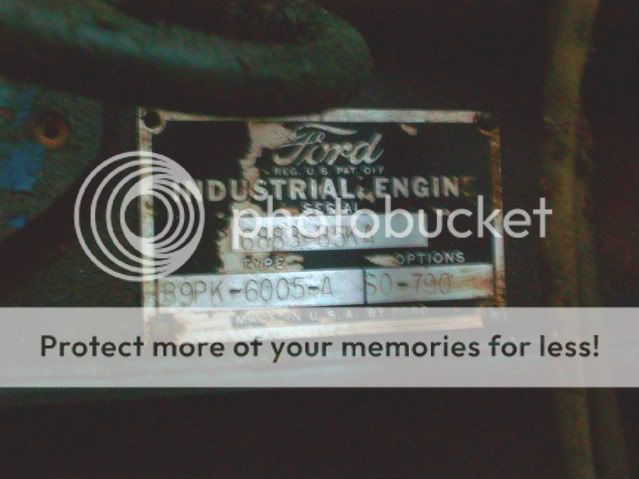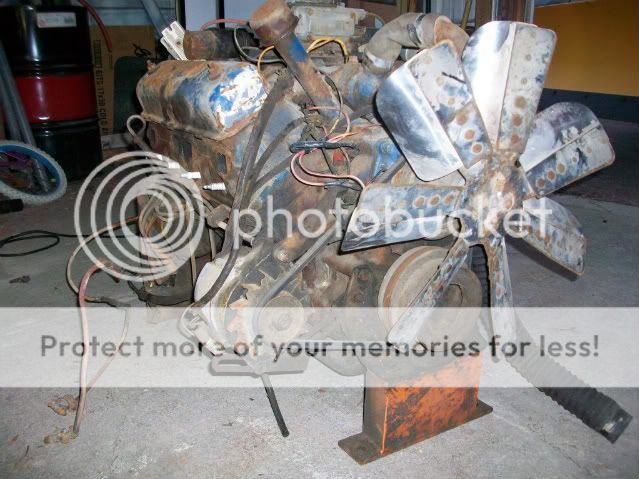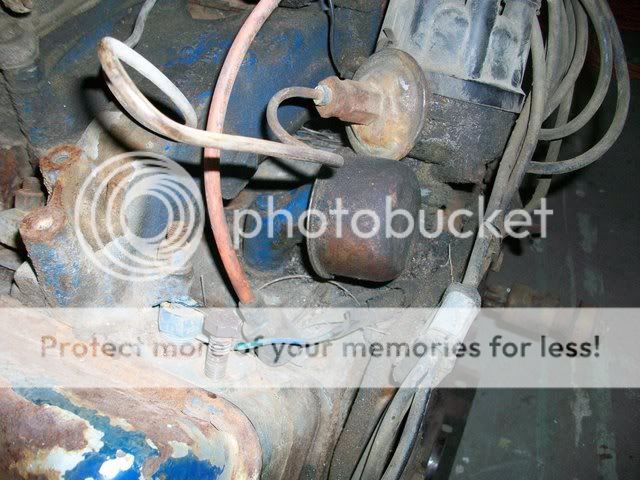|
Author
|
Message
|
|
Outlaw56
|
|
|
Group: Forum Members
Last Active: 2 Years Ago
Posts: 435,
Visits: 26.8K
|
I have a freind who has a 292 block in a hay barn under a ton of hay. I have to travel 200 miles and wait until a ton of has has been used to get to this engine to see what it is. He did say it does not have the ram horn manifolds, but was the heavy duty engine used in marine applications and commercial trucks. I understand no one can tell me with this might be, but is there a 292 that was used in commercial engines and marine applications and if so, is the possibility this might be one worth pursuing? He said it ran perfect when he removed it four years ago except had an oil leak at the rear main. I am looking for a block I can disamble and rebuild over the next four/five years, so running or not is not important. Thanks in advance if anyone has any information on what a commercial 292 might actually be. Darrell Howard, Whitefish, MT
Darrell Howard Whitefish, MT Outlaw 56 Ford F-100's
|
|
|
|
|
paul2748
|
|
|
Group: Forum Members
Last Active: Yesterday
Posts: 3.6K,
Visits: 497.8K
|
There were blocks that had much heavier interior webbing in the main bearing area. I don't know if these were just trucks or all the later 292's
54 Victoria 312; 48 Ford Conv 302, 56 Bird 312
Forever Ford
Midland Park, NJ
|
|
|
|
|
PF Arcand
|
|
|
Group: Forum Members
Last Active: Last Year
Posts: 3.3K,
Visits: 238.8K
|
As I understand it there were no truck only blocks. As noted there were late blocks marked C1AE or C2AE that had heavier main webs. (but reportedly thinner cylinder walls) However, there were starting in 1961 (according to Y-Blk Mag) some truck engines that had C1TE steel cranks, and H.D. C1AE or C2AE rods. (the two rods have different lengths) The steel crank can be recognized at the flange by having a complete bolt circle with no notches or cutouts. Some truck engines also have a flat tapered oil pan rather than a front sump pan. Some had 4 Bbl intakes probably with some sort of governor setup. Unfortunately there are pros and cons to truck/bus engines, most have low compression heads some with very small intake valves. A truck block may also have a cast spacer behind the water pump (it's also a T.Bird part) Some also had sodium cooled valves. Some earlier ones are also 272s. The steel cranks & H.D. rods are valuable to some extent, but aren't needed in a moderate performance or street engine. And H.D parts were not found in Pick up trucks. Hope this covers most of what you need to know initially..
Paul
|
|
|
|
|
Outlaw56
|
|
|
Group: Forum Members
Last Active: 2 Years Ago
Posts: 435,
Visits: 26.8K
|
Thanks for those responses, I will most likely keep looking for a good 292 block and keep my options open to make a trip this spring to at least get the numbers of that block to see exactly what it is. Thanks for your help!
Darrell Howard Whitefish, MT Outlaw 56 Ford F-100's
|
|
|
|
|
Rono
|
|
|
Group: Forum Members
Last Active: Last Year
Posts: 1.3K,
Visits: 80.0K
|
Darrell; Below is a link to a series of Y-Block tables. Go to the Block Identification table and match the block casting to one on the table. The C2AE 292 blocks are some of the best to build. http://www.ford-y-block.com/techincal.htm Rono.
 Ron Lane, Meridian, ID Ron Lane, Meridian, ID
|
|
|
|
|
Daniel Jessup
|
|
|
Group: Forum Members
Last Active: 3 days ago
Posts: 2.0K,
Visits: 131.0K
|
Darrell, I just picked up a C2AE block myself, but this is the first time I have run across anything industrial. You can see the original tags and id in the photos below. Two interesting things to note are the rear valley pan breather tube and cap (screws down to the normal vent at the rear of the pan), and the brackets/stands that mount the engine upright. I would assume that these were used to put the engine on a frame or permanent stand hooked to something that needed "power". I did not get a good photo of it, but the crank dampener has an extra pulley on it, but I don't think it is bolted on like most of the ones you typically see. The motor is stuck, but I do not know why. I may try to get this one running first, just to see what is salvageable. It may be usable with very little work done to it. 


Daniel JessupLancaster, California aka "The Hot Rod Reverend" 
check out the 1955 Ford Fairlane build at www.hotrodreverend.com
|
|
|
|
|
Daniel Jessup
|
|
|
Group: Forum Members
Last Active: 3 days ago
Posts: 2.0K,
Visits: 131.0K
|
here is a shot of that valley pan with the breather tube and cap in the rear... 
Daniel JessupLancaster, California aka "The Hot Rod Reverend" 
check out the 1955 Ford Fairlane build at www.hotrodreverend.com
|
|
|
|
|
crenwelge
|
|
|
Group: Forum Members
Last Active: Last Year
Posts: 512,
Visits: 1.7K
|
Engines like that were used to pump water on shallow irrigation wells during the 60's. They usually were not overhauled. Just replaced.
Kenneth
Fredricksburg, Texas
|
|
|
|
|
mctim64
|
|
|
Group: Forum Members
Last Active: 6 Years Ago
Posts: 2.4K,
Visits: 5.0K
|
Daniel, Charlie B. picked up an engine like that at auction last year, same sort of mounts and pulleys, I wonder if he has some pics to post. Also in our "Field find" of engine parts that Lincoln/Truck Y has an industrial tag on it, I expect it to be a 279 or a 302.
 God Bless. God Bless.  Tim http://yblockguy.com/ Tim http://yblockguy.com/
350ci Y-Block FED "Elwood", 301ci Y-Block Unibody LSR "Jake", 312ci Y-Block '58 F-100, 338ci Y-Block powered Model A Tudor
tim@yblockguy.com Visalia, California Just west of the Sequoias
|
|
|
|
|
Joe Johnston
|
|
|
Group: Forum Members
Last Active: 11 Years Ago
Posts: 70,
Visits: 275
|
Many years ago I bought a Y-Block that was on a Navy hydraulic pump unit from a military salvage dealer. It turned out to be a 239 but had a neat completely waterproof ignition system with all the wiring and hoses covered with braided stainless steel and screw ends to the dist cap as well. Ford has made many regular engines with "stationary" applications. You should have no problem rebuilding it.
|
|
|
|